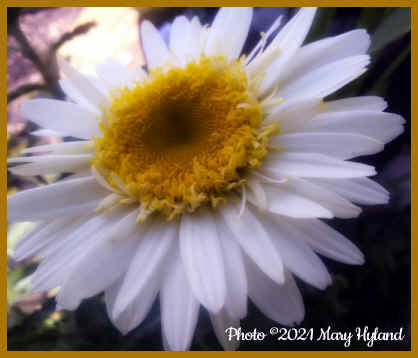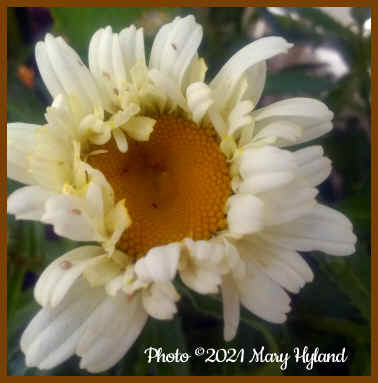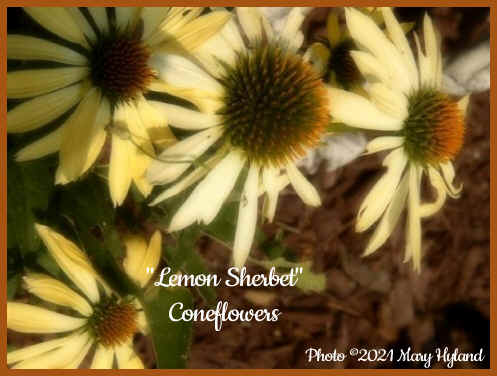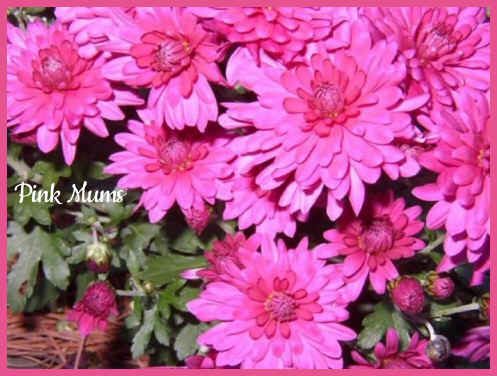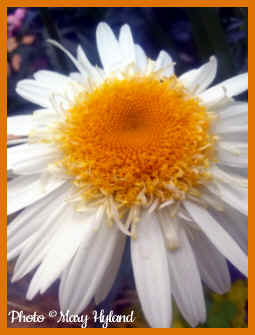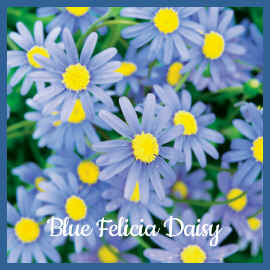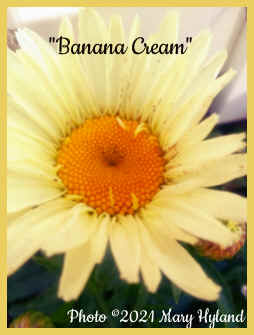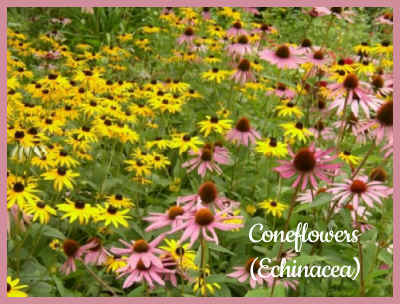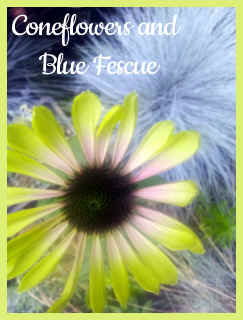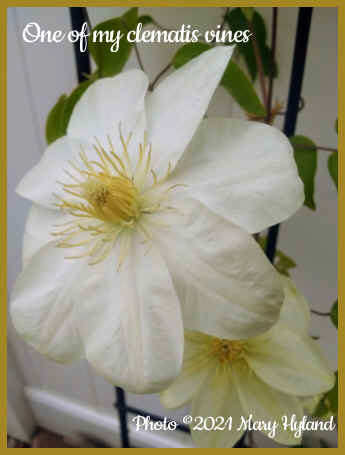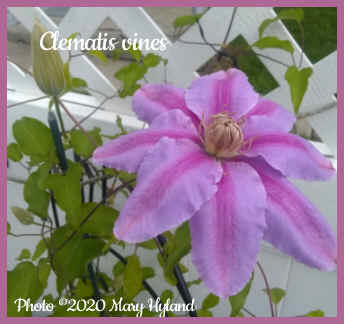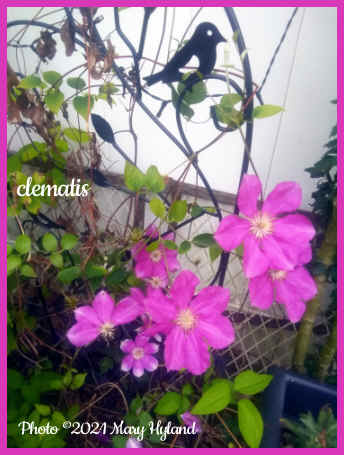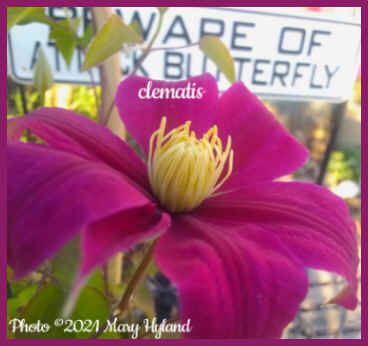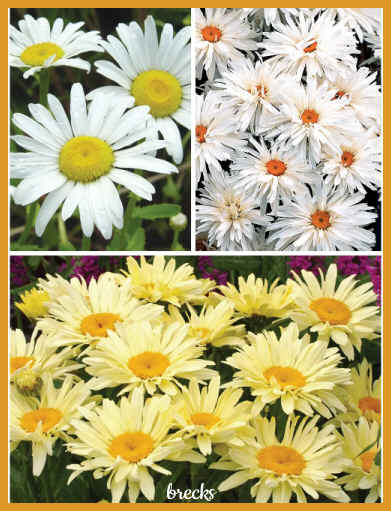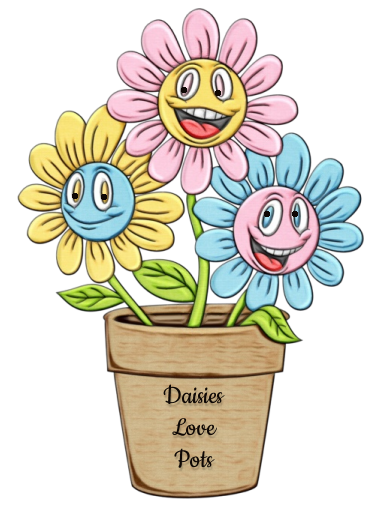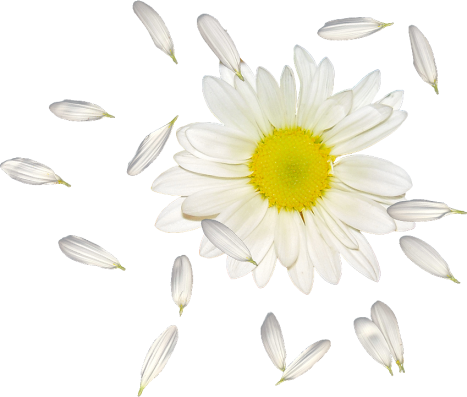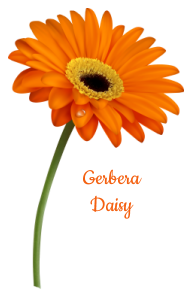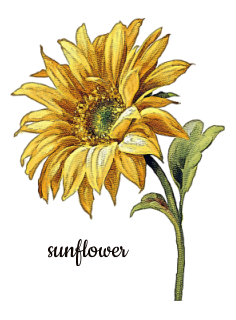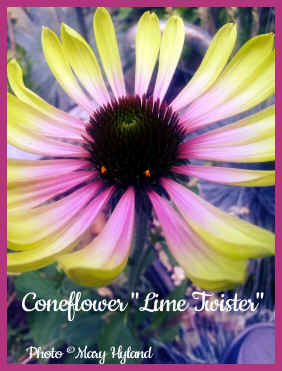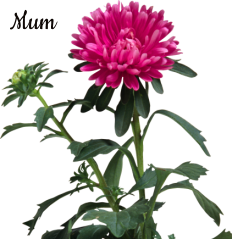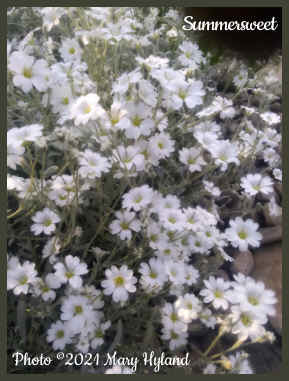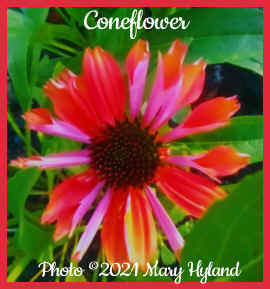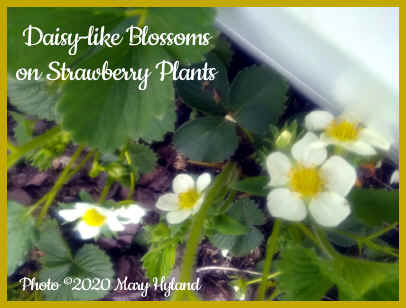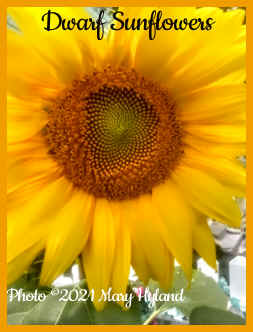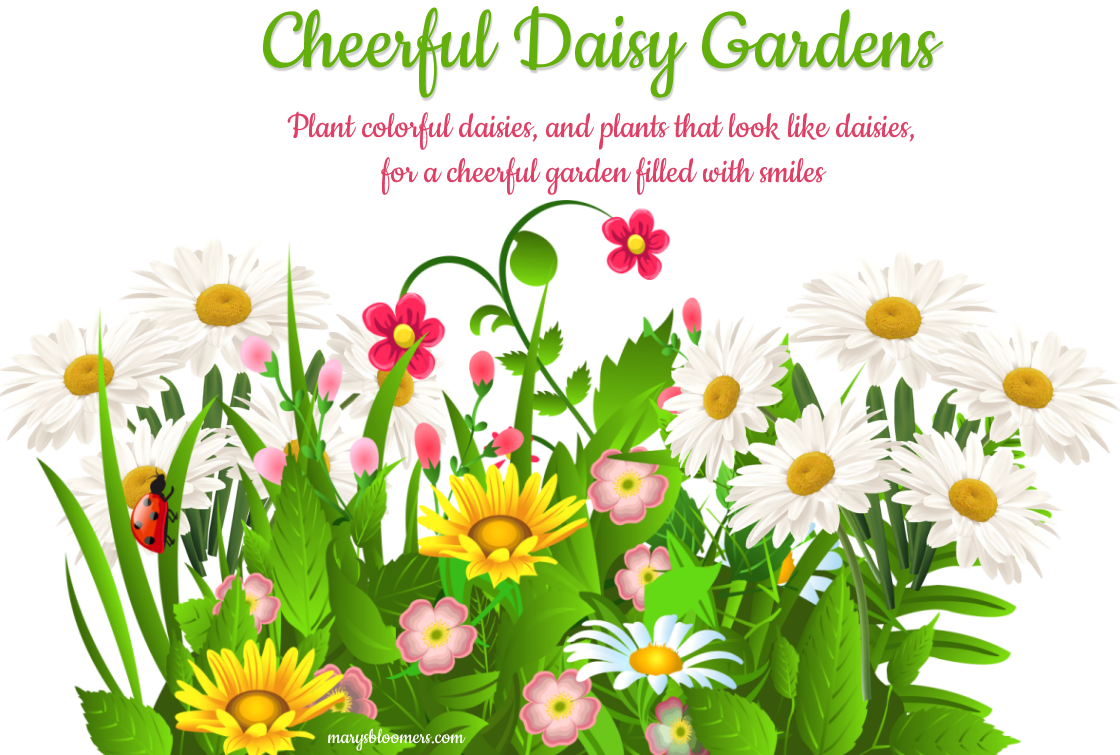 |
|
Grow daisies, gaillardia, sunflowers, coneflowers, chrysanthemums, gerbera daisies and more Daisies signify happiness and cheer, so plant a mood-lifting flower bed filled with daisies. You can choose a single color theme and add a few shots of another color as accents, or fill it with various types and colors of plants. Daisies are easy to care for and are reliable bloomers in almost every region. Plant a garden where "everything is coming up daisies" every summer day. A garden filled with flowers all of the same type isn't boring, but it is easier to take care of than most. The plants are all the same in the care they need. It's easier to take care of than a mixed perennial type border, where a lot of the plants have different needs at different times. You can choose many colors, varieties, heights and habits, so it certainly won't be boring at all. Daisies and their kin are cold hardy in most regions. Create a garden that looks unstructured, even though it is definitely structured..... let the daisy varieties do their thing with very little formality. Do not plant in rows, with the exception of a border around the garden, or along a path. Plant daisy and daisy-look-alikes within the same area. You can choose a color family, then choose from the plant families in those colors, and add taller or shorter varieties to keep the eye moving. Include ground cover varieties if you can find them, to blend everything into some type of flow and adding a "carpet" beneath taller plants to cover the soil between them.
Daisies love to be deadheaded when the blooms are going limp or dried up, and they will continue to bloom all summer if you keep it up. So a daisy cutting garden is perfect for a cheerful garden, and for cheering up your home when displayed in vases. Many daisy and daisy-like flowers grow on long and sturdy stems, so flopping is minimal, except for the large blooms on skinny stems. Put the little floppers on the outer row of your vase arrangements to hide the rim. And you can get some of those florist stem straws to keep all the tall "nodders" upright. I usually pack in my flowers and greens, so every bloom is being held up and seen whether they're top-heavy or not. For nostalgia's sake, you can weave a petty daisy chain garland in all the colors you grow and make one for your hair, like we did in the 60's. Plant any size flower bed and mix the colors the way you like them. Grow short and medium height daisies, and use coneflowers and dwarf and tall sunflowers for accent and height. You'll be growing a beautiful crop of flowers for cutting, and the plants are perennial. You'll see their happy faces every season. Choose cheerful decorations and a bench with a colorful cushion, or small metal bistro set in a bright color. Daisies and their kin attract birds and pollinators, so add a bird feeder, birdbath, and a small solar fountain for their water supply and a happy bubbling sound. Add a cheerful-sounding wind chime. This is a garden you will go to for a mood lift or a break from routine. There are so many daisy types and colors, you'll have trouble choosing a favorite. From blanket daisies to tall-stemmed daisies and look-alikes, the possibilities are endless, and it's very easy to care for this garden. Highly recommended for beginners. It's hard to look at a garden filled with daisies and be in a bad mood.
Most daisy varieties grow in full sun, reaching 18-24 inches tall and wide, and thrive in zones 5-9. Shasta daisies will bloom in spring and summer. More blooms are possible if you deadhead the plants and pick off dried or dead stuff. Grow in well-drained soil, and don't water at night, because mold and rot may become an issue. Since you can't do anything about humid weather, you can spray your plants with Neem Oil if you're in for a stretch of damp weather. Neem Oil helps eliminate fungus and mildew issues, and is a great natural pesticide, as well. Grow the suggested plants in any of the design themes on this site in-ground or in pots, or both. I prefer pots. If you live in an urban setting where soil is almost or thoroughly non-existent, pots are the way to go. I can move entire garden themes all over the yard according to my whims. So don't let the lack of space or soil stop you. You can grow this theme as a vertical garden if you have only a balcony or small courtyard to plant in. Use tiered garden shelves, trellises and hanging pots. Whatever size or configuration that works for you will be beautiful. I have converted most of my small space into a garden featuring planters, trellises, shelves arches, ornamental fencing for vines, and I use hanging baskets. My ornamental dwarf trees and fruit trees are the focus in the centers, or the sides, of my designs. I wouldn't be able to have as many trees and shrubs if I didn't grow in decorative pots. The most popular are the Shasta Daisies. If you use a large pot or raised bed, you can crowd a few different varieties into a small area. Adding Height and Interest Add different varieties of flowering vines or shrubs with daisy-like appearances. I added "pinwheels" of color and height using trellises in pots and in front of the posts on my white fences, and added vines. Clematis vines have somewhat of a daisy feel to them. It will draw the eye up. If you do this, along with adding a flowering ground cover, you're keeping the eye busy and the garden looks a lot larger than it really is. This is key for small space garden design - plantings of Low, Mid, High plants of similar varieties or theme. Plant some varieties of plants with small flowers, medium sized and large flowers. No wasted space, and flowering vines are beautiful eye candy. Vines, shrubs and plants bloom at different intervals, so adding a few of each type will assure a rotating display of flowers in the garden. Clematis vines bloom in April, some bloom through summer, and some bloom again in Fall. Your flowering bases should be covered. If you are lucky enough to have an arbor, pergola or gazebo - these are perfect structures for flowering vines.
I grow dwarf varieties of Coneflowers and Sunflowers as taller focal points in the beds, which look mostly flat or mounding if you don't add a taller plant somewhere. Asters and Chrysanthemums are also favorites for their daisy-like blooms that show up in early to late fall, when most daisies are done blooming, along with Coneflowers that bloom summer through fall. Interspersed among the daisies, you're assured that something will be happily blooming from late spring until late fall. "Snow in Summer" (cerastium) is a lovely evergreen (mostly) low ground cover with masses of little white daisy-like blooms for most of the summer. The foliage is velvety and finely shaped along the creeping stems. Add it between plant groupings or at the bases of plants in pots. Pollinators love it. It looks stunning spilling from window boxes, hanging baskets, and planters. One of the best fillers for everywhere you plant daisies. It creeps along and forms a low and dense mat of flowers. It is not invasive - one little pull and out they come, so be careful when thinning out your surrounding plants.
The daisy is one of the April birth month flowers. (My birth flower!). The daisy is also known as "marguerite". Daisies are composite flowers - they actually consist of two flowers combined into one. The inner section is called a disc floret, and the outer petal section is called a ray floret. Chamomile flowers look almost exactly like daisies.
Daisy folklore The best-known daisy custom is the plucking of each of its petals while chanting, “He loves me, He loves me not.” The daisy was long associated with the Virgin Mary in the Christian tradition. The daisy is symbolic of innocence, chastity, and humility. They are also sacred to St John, and are an important part of the decorations for Midsummer’s Night festivities. According to Celtic legend, whenever parents lost an infant, God sprinkled daisies over the earth. In Norse mythology, the daisy is the goddess Freya’s sacred flower. Freya is the goddess of love, beauty, and fertility, and the daisy symbolizes childbirth, motherhood, and new beginnings. It was believed that whomever picked the first daisy of the season was filled with romantic desire. It was also believed you increased the chances of a wayward lover’s return if you slept with a daisy root under your pillow. Dreaming of daisies is supposed to bring good luck in spring, but bad luck in winter. In Victorian times, it was said that if you could step on seven daisies at one time, you knew that summer had arrived. Making daisy chains used to be a common past-time, and it was believed that wearing such a chain would protect children from abduction by fairies. The daisy was also thought to have the power to ward off lightening. In Old English, daisies were referred to as “day’s eye” because at night, the petals close over the yellow center and during the day they re-open. The phrase “as fresh as a daisy” originated from this phenomenon, signifying that someone had a good night’s rest. Daisies that belong to the Gerbera family, are usually gifted to symbolize cheerfulness. Daisy Families and Flowers that resemble daisies There are some fruiting plants that have daisy-shaped flowers - use them, and grow an daisy food garden.
Basic Garden Color Theory - Handy for choosing plants in your favorite colors.
sources Mary's
garden
|
